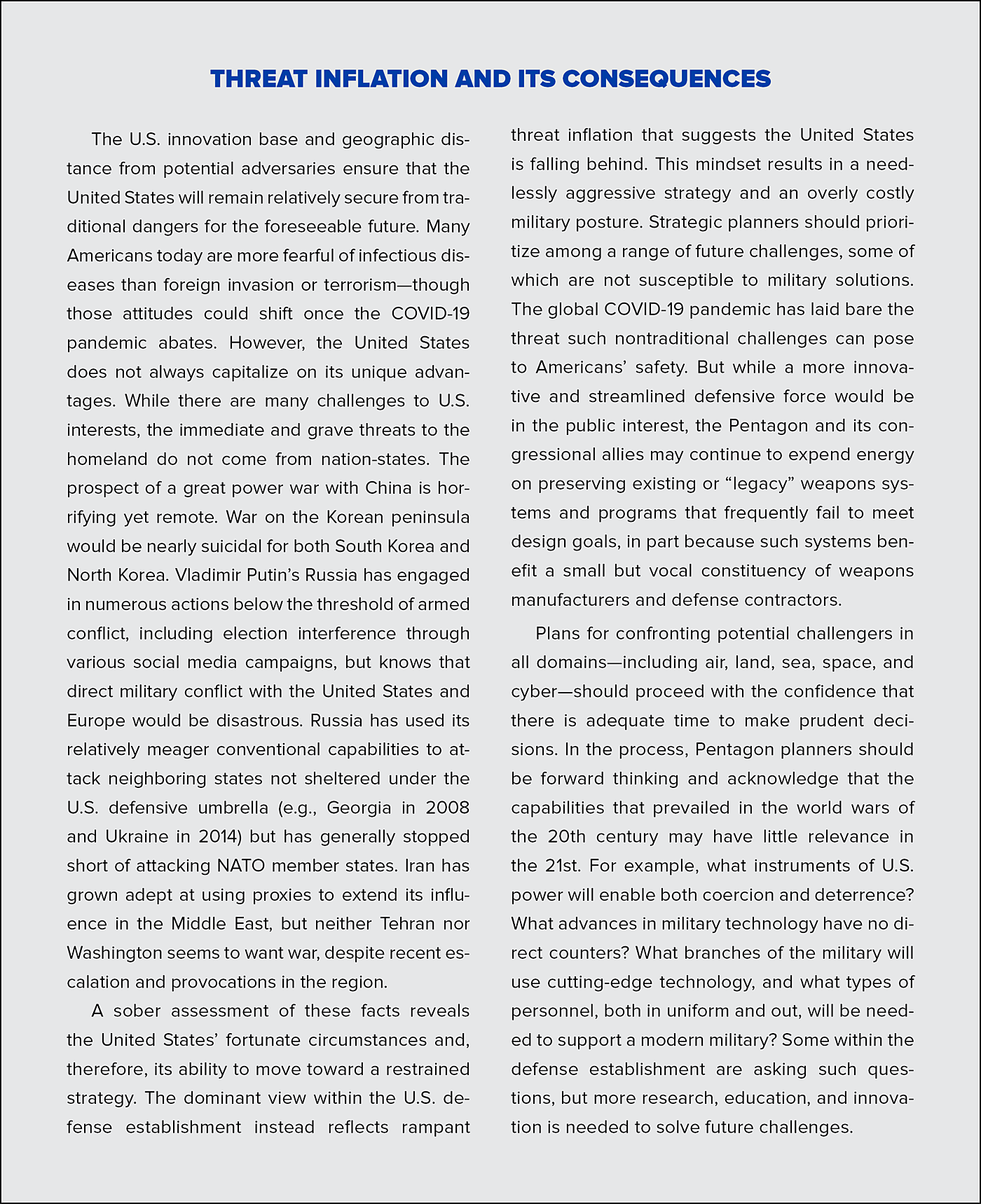This disaster is a call to action. The threat posed by nontraditional security challenges, including pandemics, climate change, and malicious disinformation, should prompt a thoroughgoing reexamination of the strategies, tactics, and tools needed to keep the United States safe and prosperous.
As of this writing in late April 2020, and well before the full impact of COVID-19 is known, it seems obvious to us that the United States can no longer justify spending massive amounts of money on quickly outdated and vulnerable weapons systems, equipment that is mostly geared to fight an enemy that might never materialize. Meanwhile, the clearest threats to public safety and political stability in the United States are very much evident and all around us. Just how demonstrations of force or foreign stability operations contribute to U.S. national security is particularly questionable at a time when a microscopic enemy has brought the entire world to a standstill.
This analysis mostly examines where the U.S. military was as of December 31, 2019, with a few observations from early 2020. Where it will be on December 31, 2020, will be guided by a critical set of questions. The authors, and the entire team of scholars in the Cato Institute’s Defense and Foreign Policy Studies Department, intend to help frame those questions—and to answer as many as possible—over the coming year.
Security politics will be different in the future, but the goal of security policy hasn’t changed and is clearly outlined in this report: to identify the most effective and efficient means for advancing Americans’ safety and prosperity. That entails ending the forever wars, terminating needless military spending, rethinking the fundamentals of strategic deterrence, and focusing the entire defense establishment on innovation and adaptation.



